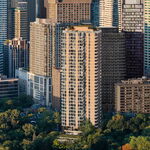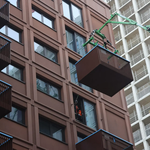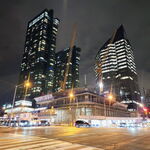ManyQuestions
Active Member
I'm asking because it would be a good way for VIA to get some long distance cars at a bargain.
Would be keeping up the tradition of buying whatever was too old to be used in the states... *cough* *cough* HEP2
I'm asking because it would be a good way for VIA to get some long distance cars at a bargain.
My understanding was that the problem with the Rennaissance fleet was that it was never designed for the North American market. It doesn't cope well with snow or cold, its unncessarily small loading gauge made it less spacious than other VIA equipment, and it didn't meet accessibility requirements. Piggybacking on an Amtrak order would not have those problems because there are only very minor difference between the Canadian and American regulations, and because Amtrak trains also need to withstand extreme cold and snow (*cough* Minnesota *cough*).*cough* Renaissance! *cough*
Both @ManyQuestions and I understood @Bordercollie as if he was suggesting to buy up the discarded Amfleet cars, while Amtrak buys a replacement with them. In any case, the cautionary tale with the Renaissance cars is that buying a fleet just because it is "available at a bargain" and despite it being very different and rather incompatible with the existing fleets and maintenance facilities causes much more costs and much less benefits than anticipated and just gives the bureaucrats an excuse to delay a proper fleet renewal by a few decades.My understanding was that the problem with the Rennaissance fleet was that it was never designed for the North American market. It doesn't cope well with snow or cold, its unncessarily small loading gauge made it less spacious than other VIA equipment, and it didn't meet accessibility requirements. Piggybacking on an Amtrak order would not have those problems because there are only very minor difference between the Canadian and American regulations, and because Amtrak trains also need to withstand extreme cold and snow (*cough* Minnesota *cough*).
Sorry, I should have been more clear I mean to tack onto an order that Amtrak makes for NEW equiptment.Both me and @ManyQuestions understood @Bordercollie as if he was suggesting to buy up the discarded Amfleet cars, while Amtrak buys a replacement with them. In any case, the cautionary tale with the Renaissance cars is that buying a fleet just because it is "available at a bargain" and despite it being very different and rather incompatible with the existing fleets and maintenance facilities is causes much more costs and much less benefits than anticipated and just gives the bureaucrats an excuse to delay a proper fleet renewal by a few decades.
Besides, my understanding is that Amfleet cars are just seating cars with some limited dining (more like "snacking facility"), which would only address a small part of VIA's headaches with its long-distance fleet - and unfortunately the part which will get solved with HEP coaches cascaded from the corridor once the delivery of the Siemens trainsets is completed.
Given the small and geographically dispersed nature of VIA's operations, there is a urgent need to standardize VIA's fleet and that would make Siemens the ideal supplier for its non-corridor fleet renewal procurement contract...
The proper way to hedge against poor quality and delayed delivery is to assess your potential suppliers on their past performance (i.e their demonstrated ability to deliver the promised product in the promised quality and quantity and within the promised time frame), which provides even more certainty which manufacturers would be a suitable choice and which ones wouldn't.Sorry, I should have been more clear I mean to tack onto an order that Amtrak makes for NEW equiptment.
Perhaps they would split the order between Viewliners and Venture equiptment? So then if one supplier flops you have a backup? or put all of your eggs in one basket?
Sanders are used whenever there is a situation where there is less than optimum traction.They don't really help with wet leaves as they get ground up by the trains and packed onto the rails.
And it doesn't take much. We used to live within sight of the old CN Uxbridge sub near an area where the grade wasn't all that significant. Towards the end the line had become pretty overgrown, and it was Fall and I watched as a train of maybe eight or ten cars stalled.Sanders are used whenever there is a situation where there is less than optimum traction.
Wet leaves or leaf mulch on the rail head is EXACTLY the situation where they are used. And yes, they help immensely.
Dan
In Southwestern Ontario, they do it in the Autumn because of the steep grade near Brantford combined with falling leaves on the track causing wheel slip. Having 2 Locos increases traction.
Seems like the best solution would be to just make sure that the new chargers are equipped with sanders. Wikipedia states that one of the modifications of the SC44 model to make the ALC42 model is larger sand tanks so I assume that they are available. Hopefully VIA chose to buy them.I am curious how this will be done with the new fleet?
I wonder if they could put traction motors on the cab car and run them using electric power generated from the locomotive similar to an EMU. That would be cheaper than adding another locomotive.I am curious how this will be done with the new fleet? As previously noted, the Chargers and Cab Cars will have a semi-permanent coupler at one end and a standard coupler at the other. That means an extra Charger locomotive can only be coupled nose to nose. I see three possible solutions:
As I have mentioned before, I suspect that the new fleet will operate with the Charger facing west when west of Montreal and facing east when east of Montreal. Central station has limited ventilation, and having the locomotive last to enter the station and first to leave would be beneficial.
- Put an extra charger locomotive at the back of the train (nose to nose). The locomotive would then need to be wyed at the end of the line, since the cab would be facing the wrong way,
- Replace the Cab Car with a locomotive. This would reduce capacity of the train and I am not sure if the semi-permanent couplers have a gender, which would prevent this.
- Seasonally add an F40PH-2 locomotive to the consist on trains that travel through Brantford.
I've heard differently and it's one of the reasons that two engines get used on trains more often in the fall than any other time of the year.Sanders are used whenever there is a situation where there is less than optimum traction.
Wet leaves or leaf mulch on the rail head is EXACTLY the situation where they are used. And yes, they help immensely.
Dan
If I recall correctly, a handful locos have their sanders (re)attached and these are targetted on trains known to be prone to wheel slip problems, like 84/87 during autumn...I've heard differently and it's one of the reasons that two engines get used on trains more often in the fall than any other time of the year.
I wonder if they could put traction motors on the cab car and run them using electric power generated from the locomotive similar to an EMU. That would be cheaper than adding another locomotive.

I'm also surprised that they are doing heavy work on LRC's considering they will be retired in 2 years. (https://www.railpictures.net/photo/768224/)
I guess they can't do this work at MMC which is why it's sent out to CAD?To do this, thick traction power (which is different from HEP) cables would need to be routed through all of the coaches to the cab car. I suspect that this could be problematic with the long and extra long trainsets. If you look at pictures of EMUs, they typically have the electrical pickups near the middle of the train and longer EMU trains often have multiple pickups.

All I see is a coach that has had its trucks removed for maintenance. The trucks are the components that see the heaviest wear and it is much easier to service them when they have been removed from the car. I don't know what the maintenance schedule is for the LRCs, but given that with my back of the napkin math an average corridor coach accumulates over 300,000 km per year, I wouldn't be surprised if the bearings need to be replaced every year or two (and they certainly need to be replaced if they start overheating). VIA isn't going to risk a derailment due to inadequate maintenance and can't afford to take coaches permanently out of service before the new trains come into service, so they need to maintain/repair the coaches they have.
I guess they can't do this work at MMC which is why it's sent out to CAD?




